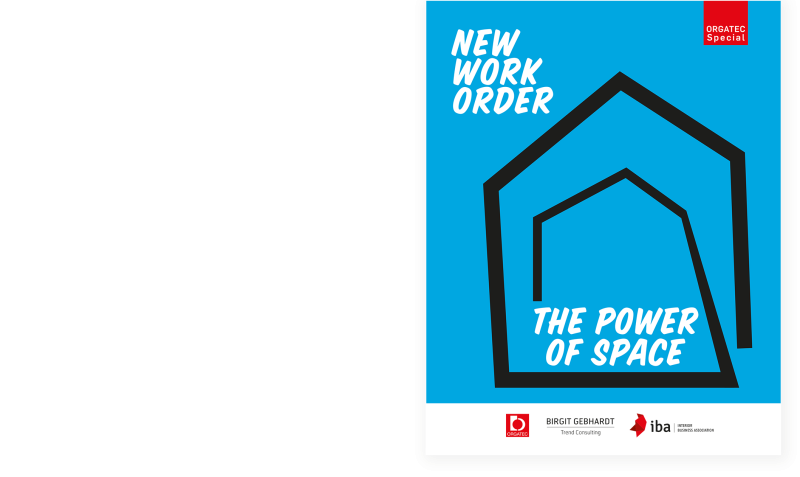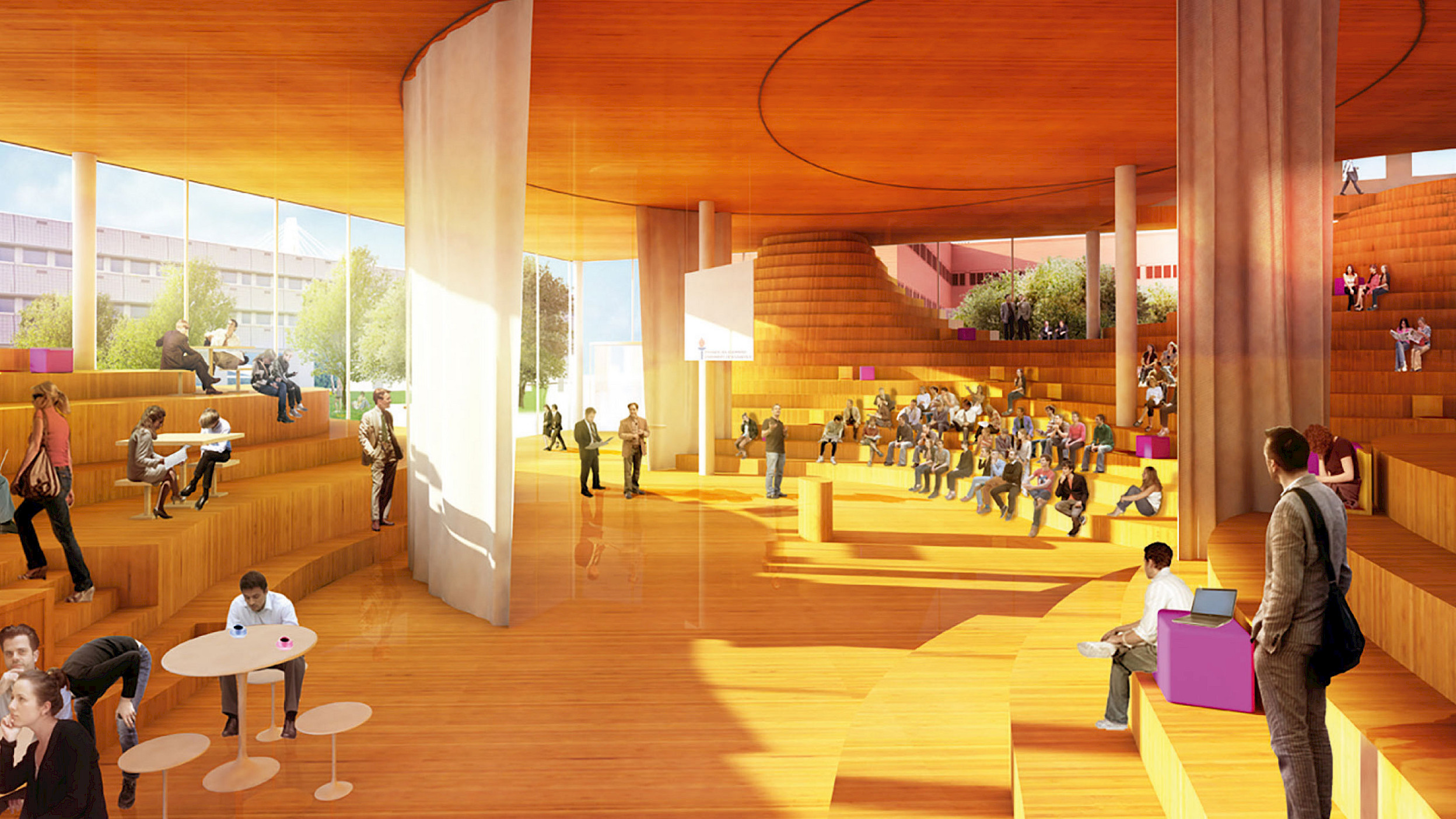At the latest during the COVID-19 pandemic, most managers and their employees realised just how much flexibility location-independent communication via digital platforms offers. However, the longer the absence from the office as a shared place of work lasted, the clearer it also became how important it is to be physically present together. In the New Work Order Special – The Power of Space, Hamburg-based trend expert Birgit Gebhardt therefore focuses on space and its potential. Below is a small selection of the topics covered.
Farewell to the Standard
The question of the best working environment is increasingly being answered on an individual basis. In many companies, employees decide for themselves when and where they work. This applies to the place of work – home office, office, or third place – and, increasingly, to the choice of workstations within the office. Birgit Gebhardt expects that in future, employees will be able to draw on smart technology to help them choose where they work. Not only can booking tools identify and reserve available capacity, they can also provide information about past work performance and health data in relation to specific spaces.
The office as an experience space: The added value of the office lies in its diverse range of spaces that stimulate and connect us both sensorially and through media technology. Its hallmarks: fewer standards, smarter equipment, bolder appearances, and more communication.

IS THE OFFICE BECOMING A STAGE?
The question may sound a little odd – but only at first glance. In her study, Birgit Gebhardt refers to town hall meetings in which CEOs talk about goals and take questions from employees. The space then becomes a stage which, depending on its design, can either create a sense of closeness or deliberately enhance distance and fascination.
In the hybrid world of work, it is not only executives who need a stage. Collaboration within teams also benefits from staging. This can strengthen team processes and positively influence creativity and work outcomes. Like a stage, being present in the office fosters visibility; new spaces create room for joint experimentation.

Strengthening Culture
Thinking of the office as a theatre or cultural landscape offers another advantage. In the context of hybrid or remote work, physical distance can quickly become personal distance. To prevent this, shared values and experiences are essential. Here, the office has a fundamental advantage over the virtual space, as it can engage more senses and make both corporate and working culture tangible:
IDENTITY
Team and corporate cohesion are not created on the drawing board. Google’s offices, for example, show how local points of reference in spatial design can strengthen ties to an international company.
COLLABORATION
A well-designed office landscape can make collaboration more efficient. Attractive communication and lounge zones encourage people to meet.
WELLBEING
The multispace office offers areas to meet people’s varying needs for concentration, creative proximity, or retreat and relaxation. The use of plants, natural light, and decorative items has been shown to enhance performance.
PURPOSE
This begins with clarity about one’s own and the shared contribution to the bigger picture, creating a stage for presenting major goals and individual achievements.
Examples
When it comes to fostering collaboration, companies also need to find the path that suits them best. The New Work Order Special – The Power of Space cites several examples:
OTTO GROUP
“How do you want to work?” asked German online retailer OTTO. In response to the answers, areas for focused individual work – known at OTTO as “libraries” in reference to their design inspiration – were reduced. In future, flexible “project garages” will be set up, available in both confidential and open forms.
SPOTIFY
For streaming service Spotify, the office is a place for socialising, onboarding, and tackling critical problems. Teams can rent spaces with work tables for up to eight people, plus a creative lounge and retreat area.
SWISSCOM REAL ESTATE
At Swisscom Real Estate, the focus is on closely observing what future users need. Uniform rules have been abolished in many areas. Each employee decides whether to share their desk or not. The primary role of the office is to work together to identify what will drive the company forward.
ADOBE
Software company Adobe sees wellbeing as a holistic concept for its workplaces – from ergonomic workstations to nutritional advice. Entrance areas are designed as lobbies, and the San José site is experimenting with consciously designed transitions between spatial zones to heighten the experience of different atmospheres.
A Glimpse into the Future
In the closing chapters, Birgit Gebhardt takes a look at the future of the office as part of urban or rural settings.
You can order a printed copy of the study free of charge via IBA Publications, or download it as a PDF.





